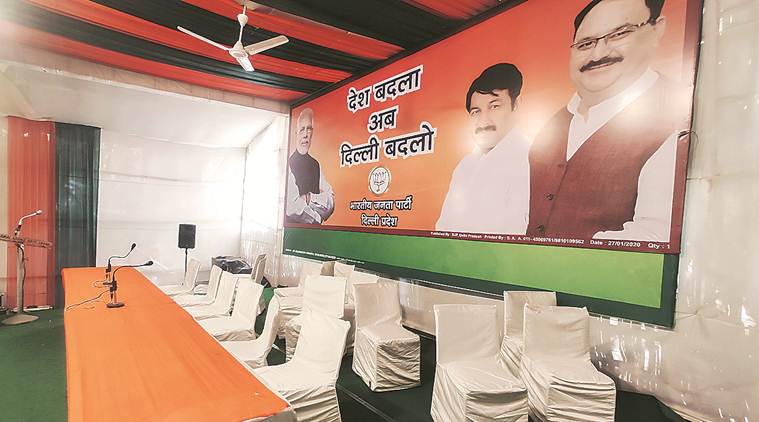 The BJP office in New Delhi on Tuesday. (Express photo by Abhinav Saha)
The BJP office in New Delhi on Tuesday. (Express photo by Abhinav Saha)
Written by Amritanshu Patnaik
At roughly 40% of Delhi’s electorate, migrants (those who have come to the city from other states) have often been touted as an important voting bloc that may prove decisive in any poll outcome. While the election this time was far from close, Lokniti’s poll-eve survey data indicates that migrants, especially from Bihar-Jharkhand (around 7% of Delhi’s electorate) — also known as Purvanchalis — may have played a significant role in boosting BJP’s vote share, thus increasing its seat tally a bit.
Even as BJP eventually finished 14 percentage points behind AAP in terms of overall vote share, among migrants from Bihar and Jharkhand it seems to have registered a very strong performance, securing 47% of their support, as per the Lokniti survey. This is a massive gain of 18 percentage points for BJP compared to the 2015 polls. Almost all of these gains seem to have come from AAP’s kitty, which had secured 64% support among this segment in 2015, but had to settle for 49% this time.
 Migrants may have played a significant role in boosting BJP’s vote share, thus increasing its seat tally a bit.
Migrants may have played a significant role in boosting BJP’s vote share, thus increasing its seat tally a bit.This almost equal splitting of Bihari migrant vote among BJP and AAP suggests the BJP’s gambit of making Manoj Tiwari, the Bhojpuri actor turned politician, its city unit chief in 2016 and the face of its campaign this election may have worked and swayed a sizeable section of Purvanchal voters in BJP’s favour.
Bihar CM Nitish Kumar had shared the dais with Home Minister Amit Shah while campaigning in Delhi for JD(U) candidates from Burari and Sangam Vihar, fielded in alliance with BJP. This, too, may have had a role to play in tilting the Bihar migrant voter towards BJP.
As far as UP migrants are concerned, about 20% of the electorate, BJP made some gains, but not as huge as the ones made among Bihar migrants. This despite as many as 12 rallies addressed in Delhi by UP CM Yogi Adityanath. Whereas 40% migrants from UP voted for the BJP, an increase of 8 percentage points compared to 2015, 52% voted for AAP, a modest loss of 3 percentage points.
Interestingly, BJP and AAP saw their vote share among migrants from Punjab and Haryana (who form roughly 6% of Delhi’s electorate) increasing compared to 2015. While BJP saw an 6% rise, AAP saw a 3% rise in support, which seem to have come at the cost of the Congress. Overall, if we club all migrant groups together, AAP performed better among voters born in Delhi than migrant voters. While 55% of the former voted for it, among the latter its vote share was four points lower at 51%. It was the reverse for BJP — it received 5 points greater support among migrants than non-migrants.
Interestingly, despite not doing as well among migrants as compared to last time, what seems to have worked in AAP’s favour is that the city seemed to have had fewer migrant voters this time as compared to 2015. In the 2015 survey, the proportion of those born in Delhi had been 55%; this went up to 61% in the 2020 survey.
(The author is associated with Lokniti-CSDS)